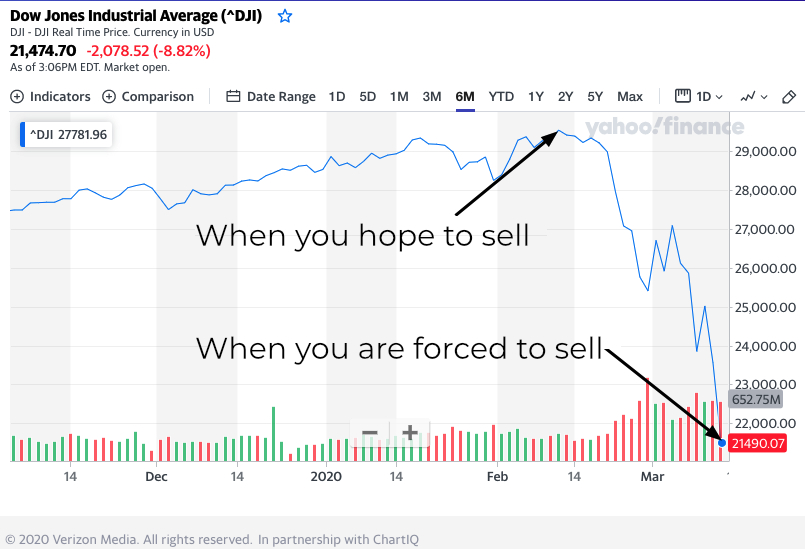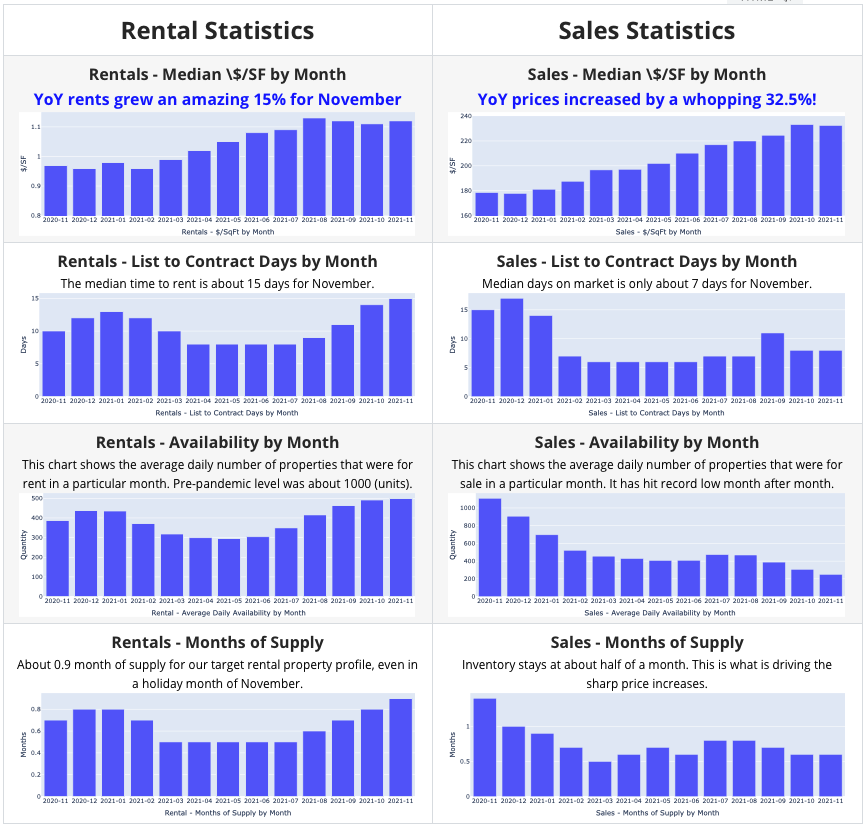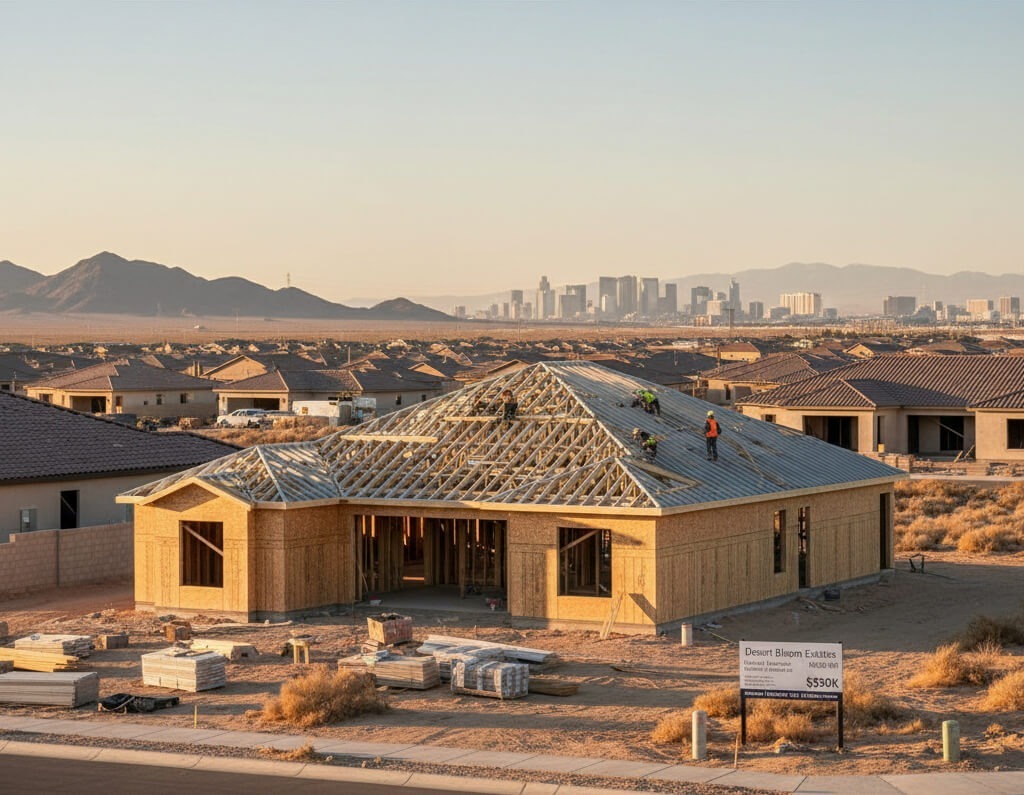- Essay – Stocks vs. Real Estate
- Potential Investment Properties
- In the News
- Market Trend
- About the Fernwood Real Estate Investment Group
I am regularly asked about the difference between using stocks (mutual funds and other similar instruments) vs. real estate to achieve financial security. My answer is that stocks and real estate are entirely different. With stocks, the method is to accumulate sufficient capital and then draw from it to meet your future monthly needs. With real estate, you accumulate sufficient income streams such that the combined total will meet your monthly needs. This essay will look at what it costs to create a passive income with stocks and real estate. I will start with stocks.
Stocks – Capital Accumulation
Stocks, mutual funds, CDs, and similar financial instruments are tools for accumulating capital. As I previously stated, the methodology is to accumulate enough capital so that you can draw from it for your living expenses over your retirement years. There are a few challenges to the capital accumulation approach.
Inflation and Required Initial Capital
To know how much money you will need to accumulate before you start drawing down, you need to correctly guess the inflation rate over the draw-down period and the number of years you and your spouse will live. Inflation has a huge impact on the amount of initial capital required. Some people assume that they can always select the mix of stocks to beat inflation, and market downturns will not occur. However, even the best money managers have not achieved this over an extended period. Remember that you need to plan for inflation and market downturns, which could wipe all gains or worse.
Below are the amounts you must accumulate to draw $10,000 each month, present value, for 30 years at various inflation rates. I ignored taxes, asset capital growth, exchange fees, and everything except inflation to keep things simple. Note that inflation is currently at 6.8% and rising. If you assume inflation will average 6% over your draw-down period, you need to have about $10M before starting.
| Inflation Rate | Initial Capital |
|---|---|
| 0% | $3,600,000 |
| 2% | $4,935,466 |
| 4% | $6,963,629 |
| 6% | $10,095,376 |
| 8% | $15,002,952 |
| 10% | $22,793,253 |
How Long You Need Your Money For?
Accurately predicting how long you and your spouse will live is impossible. And, if either of you lives longer than planned, you will run out of money. Below is a graphic from a Transamerica report on retirement fears. According to their research, people’s number one fear when approaching retirement is outliving their investments.

Market Fluctuations
You may be forced to sell during market downturns, significantly reducing your investment capital. Also, if you have the wrong mix of investments, a market downturn could wipe out some or all of your capital. The turbulent nature of the market requires you to be ever vigilant. Is staying on top of the market every day, repositioning your investments, knowing that a major mistake could wipe your working capital the way you want to live?

Real Estate – Income Streams
Real estate investing is about accumulating income streams. And, if you buy in a good market, there is also strong equity accumulation through appreciation. Leveraging accumulated equity is an excellent way to expand your holdings with limited additional investment. Before I list some of the unique advantages of real estate, I will list the disadvantages of real estate.
- Not a Liquid Asset – Stocks and similar instruments can be quickly converted to cash, while real estate can take months to sell. However, the lack of liquidity is also a strength. Because real estate is not susceptible to the knee-jerk reactions of the stock market, markets change more slowly and predictably.
- Location is Critical – The most important decision you will make is the investment location, not the property. Fortunately, there is a simple process for selecting a good investment location.
- Capital Intensive – With stocks, you can start for less than $100. With real estate, significant initial capital is required.
Advantages of real estate:
- Simple – If you work with a good investment team, your time investment is minimal, so are your risks.
- Forgiving – As long as you buy in a location where rents and prices increase faster than the inflation rate, appreciation and rent increases will correct all but the worst mistakes.
- Inflation Protection – Rents and prices have historically tracked inflation, while your costs are largely fixed. So, as rents rise, your return increases. To a large degree, inflation is advantageous to real estate investors, provided you invest in a location where price and rents increase faster than inflation.
- Reliable – Buying a car or taking a vacation is optional. Having a place to live is not. Because housing is a requirement, your rental income is highly reliable.
- Long Term – If you buy real estate in a good location, you will not outlive the income, nor will your children. Families in Europe and Asia live off real estate investments made hundreds of years ago.
- Leverage – Real estate is the only investment with 30 year fixed rate financing. And, when the mortgage is paid off, your cash flow increases significantly.
- Tax Advantages – Investment real estate provides significant tax advantages. Not only can you deduct business expenses like interest, maintenance, and management, but you also depreciate the property over time. In many cases, taxable deductions will create a taxable loss while receiving a significant positive cash flow. Also, you can sell an investment property and use the proceeds to buy another while deferring taxes.
- Wealth Transfer Through Generations – When someone inherits investment real estate, the IRS resets the asset’s cost basis to its value at the inheritance date. Even if the heir sells the property immediately, they pay capital gains based on the stepped-up value, not the original value. Also, depreciation restarts on the stepped-up basis.
Leveraging Accumulated Rent and Equity
The following is an overly simplified example of acquiring an inflation-friendly, near-perpetual $10,000/Mo. income stream through real estate. I will use the current (12/2021) Las Vegas real estate investment prices. The properties our clients buy, target a specific tenant pool segment that has performed well in good times and bad. The price range for such single-family homes is between $350,000 and $430,000. I will use a purchase price of $400,000 in the example below. Also, while October 2021 YoY appreciation was over 30% and rent growth was over 12%, I will use 10% and 8%, respectively. Also, I will ignore closing costs, renovation, and other costs to keep the examples simple.
If you purchase a $400,000 property and put 25% down, your cash out will be $100,000. If the initial return is 4% (after all recurring expenses), the cash flow will be approximately $4,000/Yr. Below is an over-simplified example showing the total investable cash after five years, assuming you accumulate all rents and refinance the property at the end of year 5.
| Appreciation | Rent | ||
|---|---|---|---|
| Purchase Price | 400000 | Rent Growth | 8% |
| Appreciation | 10% | Initial Rent | 4000 |
| End of Year 1 | 440000 | End of Year 1 | 4320 |
| End of Year 2 | 484000 | End of Year 2 | 4666 |
| End of Year 3 | 532400 | End of Year 3 | 5039 |
| End of Year 4 | 585640 | End of Year 4 | 5442 |
| End of Year 5 | 644204 | End of Year 5 | 5877 |
| 75% Cash Out Refi | 483153 | Total Accumulated rent | 29344 |
| Pay Off Existing Loan | -300000 | ||
| Investiable Cash | 183153 | ||
| Total Investable Cash | 212497 | ||
Notes:
- There is no need to provision for inflation if you buy in a location where prices and rents outpace inflation.
- In most cases, financed properties will have a taxable loss while generating a significant income due to all the tax deduction. So, I did not deduct taxes from the accumulated rent.
Capital Investment Required
Below is an oversimplified comparison of the capital required for a $10,000/Mo. (present value) income stream with a 6% inflation rate.
Assumptions:
- No: taxes, asset capital growth, exchange fees, closing costs, etc.
- No: market crashes or “COVIDs”
- ROI for the real estate is 5% cash on cash
- Down payment for properties is 25%
- No reinvestment of accumulated rent or refinancing out equity.
- Draw down period for the stock investment is 30 years.
Stocks
From the table earlier, you need to accumulate about $10,000,000 before you start withdrawing the monthly income. And, after 30 years you would have no funds left.
Real estate
At 5% cash-on-cash, for every $100,000 property you buy, you will net about $400/Mo. So, $10,000 / $400 x $100,000 = 25 or $2,500,000. There is no need to account for inflation with real estate, provided you buy in a location where prices and rents rise faster than inflation. If you utilized accumulated rental income and refinanced to take advantage of the accumulated equity, you would need much less capital investment.
Some observations:
- The actual amount of income you will receive from the properties will increase with inflation, maintaining your buying power.
- This is an income stream that will last throughout your life and your children’s lives.
- Once the mortgages are paid off, your monthly income will increase significantly. And, you will own the properties free and clear with appreciating market values.
In Conclusion
To withdraw $10,000/Mo., present value, over 30 years, with stock, you need to accumulate a large amount of capital. The amount you need varies significantly by the expected inflation rate and draw-down period. And, if you or your spouse live longer than expected or there is a market crash, you could outlive your investments.
With real estate, much less capital investment is required because you can use leverage (financing) and buy inflation, adapting almost perpetual income streams. You will pass these income streams to your children, which will enable them to have a better life.
As always, we welcome your feedback and or questions.
…Eric
Below is a link to this month’s list of candidate investment properties. Our proprietary data mining software selected these candidate properties from thousands of available properties, and this is just the first step in our multi-step validation process, as shown below.
- “Another month, another record for home prices”. Las Vegas housing market saw another record high median sales price (non inflation adjusted) in November amid increasing sales volume and shrinking number of listings. This indicates that demand remains high and prices will continue to be pushed higher due to dwindling supply and persistently high demand.
- “The typical rental rate of a Las Vegas-area home in August was $1,718, up nearly 25 percent from a year earlier, listing site Zillow reported. Las Vegas’ annual rent growth was fastest among the 50 metro areas in the report.”
Surging home prices and fastest rental growth in the nation are fantastic news for our clients who own class A rental properties in Las Vegas. They also show that Las Vegas is a great market to buy at this time due to its expected continuing growth.
Below are charts from our latest trailing 13 month market report, which includes November data. Remember that this data is only for the property profile that we target, not for the entire metro area. To see all the charts please click here.

For the last 15+ years, we’ve helped clients build highly reliable, passive income streams through real estate that they will not outlive. Several are now retired and living entirely on their rental income. Most never invested in real estate before they started working with us, and the vast majority live in other states or countries. Below is a two-minute video of the services we provide.
© Cleo Li and Eric Fernwood, all rights reserved.












